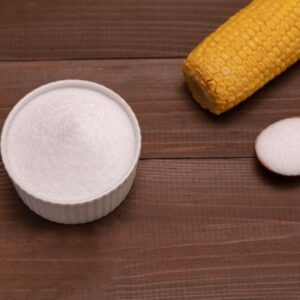
Drink This Ancient Tea to Stay out of the Clinic Waiting Room This Cold Season
- Could adaptogens keep you out of the doctor’s office and pharmacy this winter?
- Meet “the queen of herbs,” the one plant to help all of your ailments
- “Drink the tea, forget the Z-Pak,” might be the best advice for cold season.
Dear Reader,
“So you’re telling me drinking some ‘holy tea’ is going to help me fight off this cold? I know the heat makes my throat feel better, but does this stuff really help my immune system?”
“Yes, not only can it boost your immunity, but it has antibacterial and antiviral properties to help fight colds. Plus, it’s been used for thousands of years, so just give it a shot — it has a pleasant, spicy flavor.”
“Uhhh, all right… I will give it a whirl. I would try breathing fire if it meant not having to take another course of antibiotics.”
This was the FaceTime conversation I was having with my friend James last week (and yes, he actually used air quotes when saying “holy tea”).
He was already in beginning stages of a cold — aches, chills, low-grade fever, cough, and nasal congestion. He turned to me for some help finding a natural solution.
I should mention James has been a skeptic of natural health practices for many years.
But since his recent battle with methicillin-resistant Staphylococcus aureus or MRSA (a staph infection resistant to antibiotics, likely due to the overprescribing of antibiotics, which is a whole other article), he has become wary of Western medical practices.
Specifically antibiotics, hence his resistance to taking another course to stop this cold.
James had zero interest in waiting for hours at the local clinic just to be handed a Z-Pak after a two-minute evaluation by the doctor or nurse practitioner.
And who can blame him? A long sit in the waiting room can be upsetting enough. But then there is the course of antibiotics that can really disrupt your bodily functions (particularly your digestion, since they can kill your gut flora) to follow.
Needless to say, he ended up giving my tasty tea suggestion a shot.
As he should have. This ancient herb has been a staple in Ayurvedic medicine for thousands of years and remains a health booster in the modern world.
Also, the Living Well Daily mailbag has received several recent reader requests for more information on this herb, as it was featured it in our flu shot article. Thanks so much for writing in!
I am very excited to share the amazing preventative powers of this natural cold combater today.
And the best news– this powerful herb does more than increase immunity. It also helps reduce inflammation, ward off diabetes, and detox your body of everyday toxins.
I will tell you where to get and how to use it in a moment. But first, let’s steep out more about this powerhouse plant and find out if worked for my skeptical friend.
The Queen of Herbs
Called “the queen of herbs” or “the incomparable one” and often referred to as the “elixir of life” in traditional Indian medicine, holy basil, also known as tulsi, has been increasing human health for thousands of years.
In fact, Marc Maurice Cohen, professor of health science at Australia’s Royal Melbourne Institute of Technology, wrote this about the powers and uses of holy basil in the Journal of Ayurveda:
“Daily consumption of tulsi (holy basil) is said to prevent disease; promote general health, well-being, and longevity; and assist in dealing with the stresses of daily life. Tulsi is also credited with giving luster to the complexion; sweetness to the voice; and fostering beauty, intelligence, stamina, and a calm emotional disposition. In addition to these health-promoting properties, tulsi is recommended as a treatment for a range of conditions including anxiety; cough; asthma; diarrhea; fever; dysentery; arthritis; eye diseases; otalgia; indigestion; hiccups; vomiting; gastric, cardiac, and genitourinary disorders; back pain; skin diseases; ringworm; insect, snake, and scorpion bites; and malaria.”1
These days, modern research validates what traditional medicine has always known — holy basil is a powerful healer. This is due to it being a powerful adaptogen.
Often dismissed by Western medicine, adaptogens are helpful in assisting the body’s ability to combat disease by halting the negative effects of stress and increasing the regulation of bodily functions.
Many contemporary studies have also proven holy basil antibacterial; antiviral; anti-inflammatory; anti-cancer; heart and brain protective; anti-diabetic; anti-arthritic; and, most importantly for my friend James’ purposes, immune system supportive.1
But these just scratch the surface of holy basil’s protective and healing properties.
With high levels of phenolic compounds and anti-oxidant properties, holy basil proves to be an effective detoxification supplement, stress hormone reducer, and anti-inflammatory agent.
Anti-oxidant molecules act as a cleansing agent against free radicals and toxic compounds and increase levels of liver enzymes. These enzymes neutralize harsh toxins and allow the body to expel them effectively. 2,3
In addition to boosting detoxification, recent human trials have shown this hardworking herb to decrease blood glucose and stress hormones. These lowered levels help alleviate many of the symptoms of Type 2 diabetes — as well as improve overall health and mood.4,5
Holy basil is loaded with anti-inflammatory compounds. Since Inflammation can be the cause of many health ailments such as arthritis, muscle pain, cardiac issues, and decreased mobility, it is vital to reduce inflammation.
In fact, recent animal studies have shown it has anti-inflammatory powers similar to those of aspirin and ibuprofen.6
Pretty amazing that one plant can be so beneficial to many aspects of your health!
By now, you might be wondering where to get holy basil and how you use it. Before I share that, let’s find out if holy basil kicked James’ cold or if he ended up in the clinic waiting room.
“Drink the Tea, Forget the Z-Pak”
This is exactly what James told me when I checked in with him a few days after my holy basil tea suggestion.
He said he drank a cup of holy basil tea three times a day — in the morning, at lunchtime, and before bed.
After the second cup, he reported feeling less “achy and miserable.” By next day, his cold symptoms had vanished and he “felt better all over.”
As a new firm believer in the power of holy basil, James has been drinking at least one cup every morning since his first use.
You can purchase holy basil in tea in bag or loose form at health food stores and some grocery stores. It comes in green- and purple-leaf varieties. I have only used the green leaf form but have heard the purple is just as good. If you can’t locate it in your area, it is available here.
The tea is naturally caffeine-free and has a sweet yet spicy taste. It is very tasty when served warm but also makes a delicious iced tea in the warmer months.
Also, if tea isn’t your thing, holy basil is also available in supplement form. Supplement capsules are available here. You should take the manufacturer’s suggested dosage.
Note: The FDA granted holy basil “Generally Recognized as Safe” status. However, if you are on blood thinner or taking an anti-coagulant or anti-platelet drug, you should use holy basil with caution. Always check with your doctor or pharmacist before starting a new supplement.
If you have tried holy basil, let me know how it worked for you! nmoore@lfb.org
Live well,

Natalie Moore
Managing editor, Living Well Daily
P.S. In case you missed the immune-boosting cocktail recipe from the flu shot article, here it is:
Immune-Boosting Cocktail
1 teaspoon apple cider vinegar
1 cup holy basil tea
1 lemon slice
1 pinch grated ginger
½ teaspoon raw honey or to taste
Steep holy basil tea for 10 minutes. Add in ACV and honey, stir. Then garnish with lemon and grated ginger.
This tea cocktail is perfect for first thing in the morning to get your immune system working and also good as an immune restorative before bed.
Sources
[1] Tulsi – Ocimum sanctum: A herb for all reasons
[6] Antioxidant and cyclooxygenase inhibitory phenolic compounds from Ocimum sanctum Linn.
Written By Natalie Moore
Natalie Moore is a dedicated health researcher with a passion for finding healthy, natural, and science-based solutions. After a decade of direct healthcare experience in western and natural medicine, she was involved in public health research before joining Living Well Daily.
View More Free Articles
Stop Obsessing Over Diet Trends
Can we stop with the endless diet debates already? Every other week there’s a new headline shouting about which diet is best for weight loss, heart health, or diabetes. Paleo, keto, low-carb, high-protein… it’s exhausting. And now, a new meta-analysis is out comparing the Mediterranean diet, the DASH diet, and something called AHEI (that’s “Alternative...
A New Reason to Ditch Processed Junk
If you’ve ever walked the inside aisles of your local grocery store and thought, “This is all just junk,” your instincts were spot on. A new study published in the journal Thorax just added another red flag to the list of dangers linked to ultra-processed food—a 41 percent higher risk of lung cancer. That’s right....
When Being Winded on Stairs Is Serious (And When It Isn’t)
I had an athlete visit me recently because he experienced shortness of breath while climbing stairs. He is in great shape, so he was worried about what it might mean. “Doc,” he said, “I run five miles three times a week. Why am I huffing and puffing after two flights of stairs?” His concern is...
Study EXPOSES Hidden Danger Lurking in Your Car
We think of our homes and cars as safe havens. But according to a startling new study, they may be flooding your lungs with microscopic plastic particles—every single day. Researchers in France recently found that adults inhale an average of 68,000 microplastic particles daily from indoor air alone. To put that in perspective, that’s about...
Mailbag: Is Modern Food Making You Snore?
“What can cause snoring, and is there a way to correct this issue?” —Seeking Silence Hi Seeking, Snoring happens when the soft tissues in your throat relax and vibrate as air passes through during sleep. While several factors can cause snoring—from sleep position to nasal congestion—I want to share one trigger that might surprise you....
Simple Food Swap SLASHES Dementia Risk 28%
Let’s be honest… who would jump at the chance to cut their dementia risk by 28 percent. And no, you don’t need to run marathons, survive on broccoli, or learn to play the zither (whatever that is) to make it happen. All it takes is one easy swap—something that’s probably already in your refrigerator. Researchers...
This SMART Floss Exposes Hidden Health Danger
Scientists have created dental floss that doesn’t just clean between your teeth—it also tracks your stress while you’re flossing. Now, I know what you’re thinking… “Great—now even flossing is going to stress me out by telling me how stressed I am.” But this fascinating new tool from Tufts University could be a game-changer for understanding...
Is This "Safe" Sweetener Damaging Your Brain?
The headlines are alarming… “Popular Sugar Substitute Linked to Brain Cell Damage” and “Erythritol Could Damage Critical Brain Barrier” are just two of the dozens I’ve spotted recently. But before you toss every sugar-free product in your pantry, let’s take a closer look at what this study actually shows—and what it doesn’t. The latest research...
This Summer Threat Could SPIKE Your Blood Sugar
Picture this… It’s another scorching hot summer day. You crank up the air conditioning while watching the weather forecast, which predicts yet another “record-breaking” heat wave. It’s starting to feel like just another miserably uncomfortable summer. But what you might not realize is that—if you have diabetes—those rising temps could do far more damage to...
Move Over Yogurt—5 Foods That Pack MORE Probiotics
Let’s talk about your gut. The microbiome is the collection of trillions of bacteria and other tiny organisms that live in and on your body—especially in your gut—and help keep you healthy. I’ve written often about how vital it is to maintain a healthy microbiome. And you might have dutifully added yogurt to your shopping...









